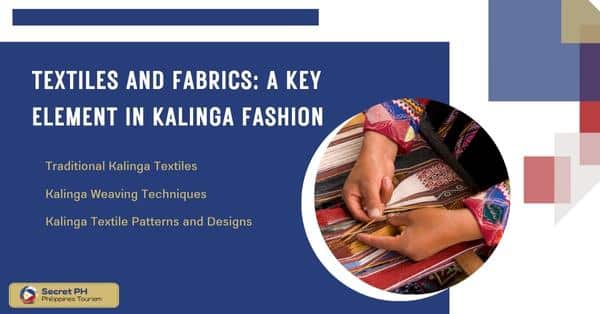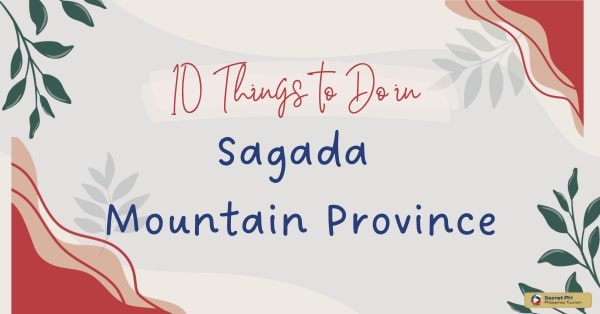The province of Kalinga in the Philippines is home to a vibrant and diverse indigenous community. One of the most fascinating aspects of their culture is their traditional attire, which reflects their rich heritage and unique identity. From intricately woven fabrics to ornate accessories, Kalinga’s fashion scene is a true testament to its deep-rooted traditions and preserved cultural practices.
In this blog, we will delve into the world of Kalinga’s indigenous fashion and discover the beauty and significance behind their traditional attire and accessories. So, join us as we take a journey through time and explore the colorful and intricate world of Kalinga fashion.

The Rich Heritage of Kalinga Traditional Attire
The rich heritage of Kalinga traditional attire is deeply intertwined with the cultural identity and history of this Philippine province. For centuries, Kalinga’s indigenous communities have passed down their distinctive clothing styles, creating a visual tapestry that reflects their unique way of life.
These garments are more than just clothing; they are a repository of cultural values and traditions. Traditional Kalinga attire varies between genders and across subgroups within the province. Women often wear blouses and skirts adorned with intricate beadwork and embroidery, while men don loincloths and vests, showcasing their craftsmanship in weaving and textile production.
These garments are not only functional but also carry significant cultural symbolism, with colors, patterns, and designs often denoting social status, marital status, and even achievements. The legacy of Kalinga’s traditional attire continues to be a source of pride and a vital aspect of preserving the province’s rich cultural heritage.

Traditional Kalinga Clothing Styles
Kalinga clothing is more than just a fashion statement. It also serves an important cultural purpose. Traditional Kalinga clothing helps to distinguish the Kalinga people from other ethnic groups and to affirm their cultural identity. It is also worn during special occasions, such as weddings, festivals, and rituals.
Traditional Kalinga clothing for men
Bahag: A loincloth made from a single piece of fabric that is wrapped around the waist and secured with a belt.
Ga’dang: A traditional Kalinga vest made from handwoven fabric. It is typically sleeveless and has a V-neckline.
Iwang: A headband made from cloth or beads.
Watwat: A sash worn around the waist. It is often used to carry tools or weapons.
Traditional Kalinga clothing for women
Kain: A wraparound skirt made from handwoven fabric. It is typically worn from the waist down and covers the knees.
Luhid: A blouse made from handwoven fabric. It is typically sleeveless and has a V-neckline.
Bakwat: A sash worn around the waist. It is often used to carry tools or weapons.
Inawat: A shawl or blanket worn over the shoulders. It is often used to protect the wearer from the sun or cold.

Textiles and Fabrics: A Key Element in Kalinga Fashion
Textiles and fabrics are a key element in Kalinga fashion. Traditional Kalinga clothing is made from handwoven fabrics, typically made from cotton, abaca, or pineapple fibers. The fabrics are often decorated with intricate geometric patterns and beadwork. Kalinga clothing is also characterized by its bold use of color, with red and black being the most common hues.

Traditional Kalinga Textiles
Traditional Kalinga textiles are made using a variety of techniques, including backstrap weaving, belt weaving, and loom weaving. Kalinga weavers are also skilled at using natural dyes to color their fabrics.
Some of the most common types of traditional Kalinga textiles include:
- Inawat: A blanket or shawl made from handwoven fabric. It is often used to protect the wearer from the sun or cold.
- Binallay: A type of cloth made from abaca fibers. It is often used to make bags, mats, and other utilitarian items.
- Ganni: A type of cloth made from cotton fibers. It is often used to make clothing and other items.
- Binakol: A type of cloth made from pineapple fibers. It is often used to make clothing and other items.
Kalinga Weaving Techniques
Kalinga weavers use a variety of techniques to create their beautiful fabrics. Some of the most common techniques include:
- Backstrap weaving: A type of weaving that is done using a backstrap loom. The backstrap loom is a simple loom that is made from two straps that are tied around the weaver’s waist.
- Belt weaving: A type of weaving that is done using a belt loom. The belt loom is a more complex loom than the backstrap loom and can be used to create a wider variety of fabrics.
- Loom weaving: A type of weaving that is done using a loom. The loom is the most complex type of loom and can be used to create the widest variety of fabrics.
Kalinga Textile Patterns and Designs
Kalinga textile patterns and designs are often geometric in nature. Some of the most common patterns include diamonds, triangles, and zigzags. Kalinga textile designs often have symbolic meaning. For example, the diamond pattern is often used to represent the earth, while the triangle pattern is often used to represent the mountains.

Ornate Accessories: Adornments in Kalinga Indigenous Fashion
Kalinga indigenous fashion is not complete without its exquisite array of ornate accessories. These adornments play a vital role in enhancing the overall aesthetic and cultural significance of traditional attire.
Crafted with meticulous skill and often from locally sourced materials, Kalinga’s jewelry and accessories serve as both decorative embellishments and repositories of cultural heritage. Let’s delve into the world of these captivating adornments.

Jewelry
- Kalung (necklace made from beads, shells, or metal)
- Abong (earring made from beads, shells, or metal)
- Puking (bracelet made from beads, shells, or metal)
- Gayaman (ring made from beads, shells, or metal)
- Bangkilat (anklet made from beads, shells, or metal)
Headgear
- Iwang (headband made from cloth or beads)
- Watwat (sash worn around the waist)
- Inawat (shawl or blanket worn over the shoulders)
- Bakwat (headdress made from feathers, beads, and shells)
Tattoos
- Batok (full-body tattoos)
- Kalinga tattoos are typically geometric in design and have symbolic meaning.

Preservation Efforts and Cultural Revival
In the face of modernization and evolving lifestyles, Kalinga’s cultural heritage and indigenous fashion face significant challenges. However, dedicated preservation efforts and cultural revival initiatives are actively working to safeguard these invaluable traditions.
Cultural organizations, local communities, and government support play pivotal roles in ensuring the longevity of Kalinga’s unique heritage. One noteworthy aspect of these preservation efforts is the revival of traditional weaving techniques and textile production. Many Kalinga weavers are passing on their knowledge and skills to younger generations, revitalizing the art of creating intricate fabrics using age-old methods.
Additionally, cultural festivals and events celebrating Kalinga’s heritage, including fashion shows and exhibitions, provide platforms for both locals and outsiders to appreciate and support these rich traditions. Through these concerted efforts, Kalinga’s indigenous fashion not only survives but thrives, serving as a source of pride and a symbol of cultural resilience in the face of change.

In conclusion
Kalinga’s indigenous fashion is a captivating and integral part of the province’s cultural heritage. From traditional clothing styles and textiles to ornate accessories and preservation efforts, it embodies the depth and beauty of Kalinga’s unique identity. Through continued support for these traditions, we can help ensure their preservation for generations to come.








